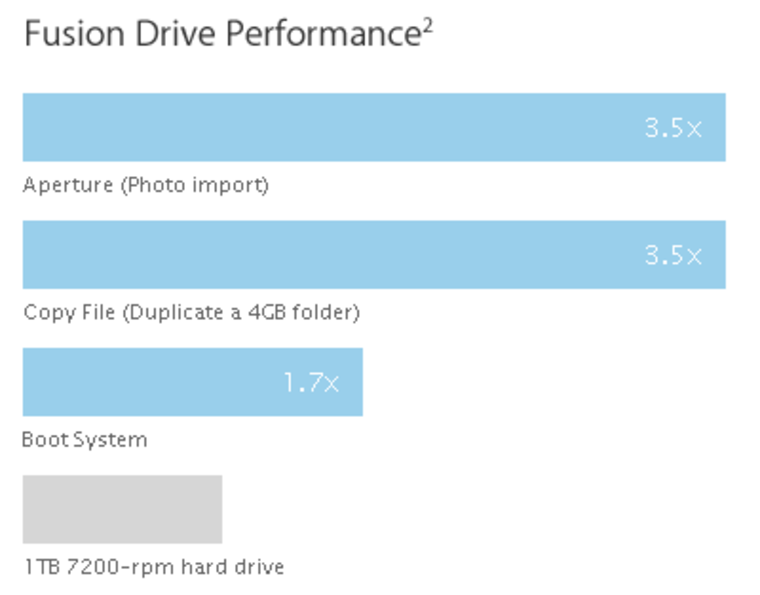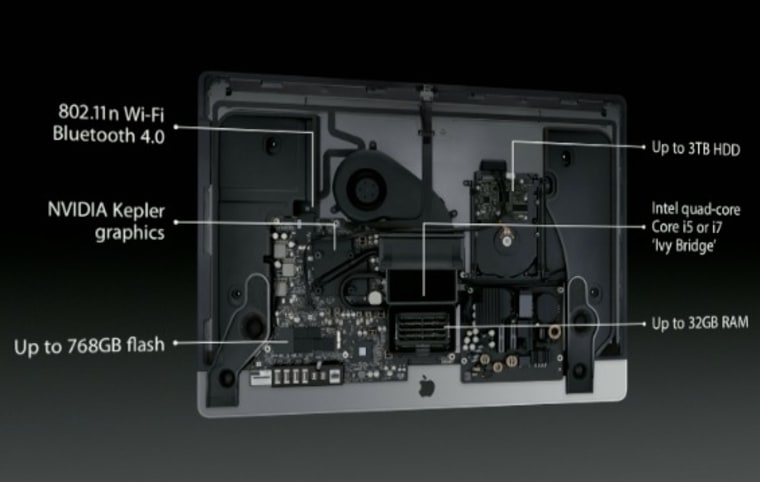
Apple's latest iMac features what Apple calls a "Fusion Drive," which combines a high-capacity hard disk with a high-speed solid state drive. Is it really the best of both worlds, and should you spring for it?
The choice between speed and capacity has defined our devices over the last few years. Devices like tablets have limited storage, 64GB at the most on iPads, an amount that seems paltry next to the terabytes that fit onto a single traditional hard drive for a PC. But that 64GB is flash memory, which is much faster.
As a result, things like streaming music and cloud storage have become very popular, since no one can carry around their whole media collection on their phone.
Apple's take on a well-known technology
On the PC side, for years many users have chosen to adopt SSDs as part of their desktop systems. Since PCs can have multiple drives, a fast SSD can be used for the operating system and other critical items, and lesser-used data like old photos can sit on the high-capacity spinning drive.

Some "hybrid" drives even combine the two types of storage. Instead of making the user deal with the hassle of multiple drives, partitions, and other technical issues, the drive itself deals with all the details and the only thing the user sees is an increase in speed.
Apple's Fusion Drive is an example of this hybrid storage, though unlike those other drives, on Apple's system the fast and slow portions of the drive are actually separate devices, meaning they can be updated or replaced individually, and also allowing the SSD piece to be of a much higher capacity. The 128GB SSD holds the OS itself, your most frequently used apps, and photos and video that are in constant use or might otherwise load slowly. And then there's enough room on the hard disk drive to stash all the rest of your data.
Fusion needs room to breathe
Will we see the Fusion Drive expand to other devices? When rumors first appeared of the new hybrid storage, it seemed likely it would be used in the then-forthcoming Retina MacBook Pro. But when those arrived, it was clear that Apple preferred the all-flash solution, like on the MacBook Air. Like on phones and tablets, streaming and cloud services (and external drives) would have to fill the gap.

On the desktop it's another story: there's not as much need to worry about weight, heat, and other considerations that restrict the systems that can be put in a laptop. While the new iMac is certainly very thin, it still has far more space to work with, largely because it doesn't have a battery or built-in keyboard. Therefore, larger and more power-intensive systems like a hybrid drive can be included.
So we won't see the Fusion Drive on a MacBook or iPad any time soon, although it may appear as an option in more stationary products, like the Apple TV, Mac Mini, and Mac Pro. Even then, the continuing decline in price for flash memory combined with the increasing penetration of cloud services means the feature may be no longer be necessary in a few years.
Should you upgrade?
The big question is, of course, is it worth the upgrade, which will likely be several hundred dollars? (Apple hasn't yet revealed the price for individual upgrade options.) If you work with lots of large video files or high-megapixel photos, it very well might be worth it. As Apple points out, multi-gigabyte transfers and SD card dumps could be much faster.
But if your iMac is going to be mainly for Internet, email, and a few games, the difference probably won't be noticeable — a second or two here and there. If you've budgeted for it, use that money instead to upgrade the processor or get something helpful like a Time Capsule for backing up your data.
Devin Coldewey is a contributing writer for NBC News Digital. His personal website is coldewey.cc.